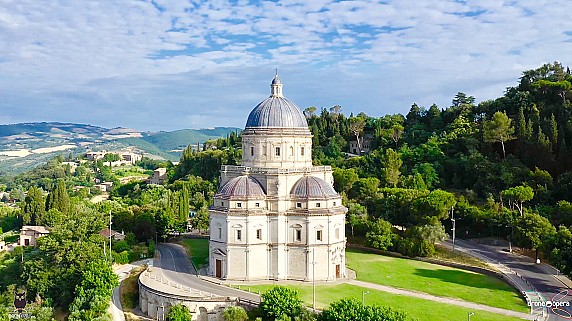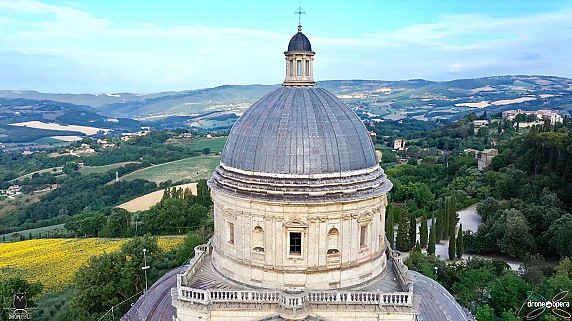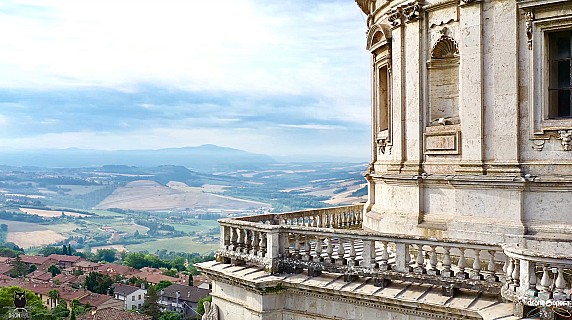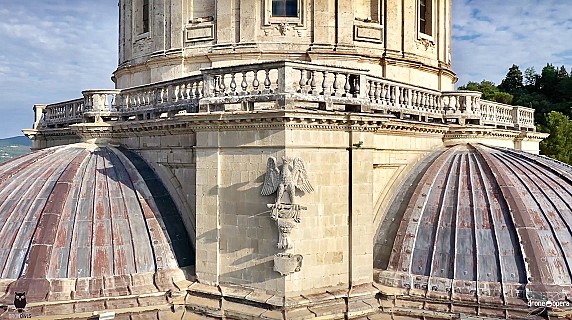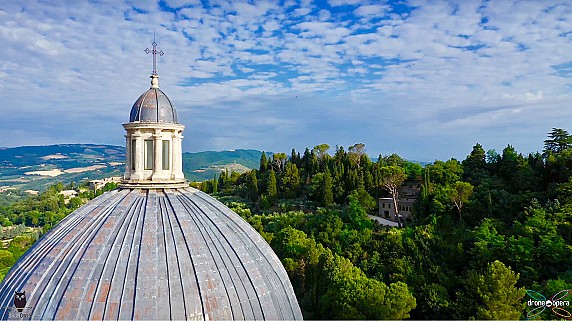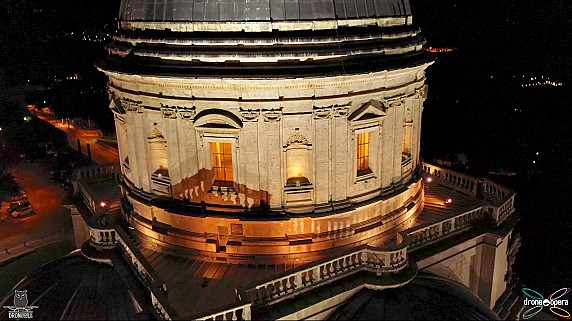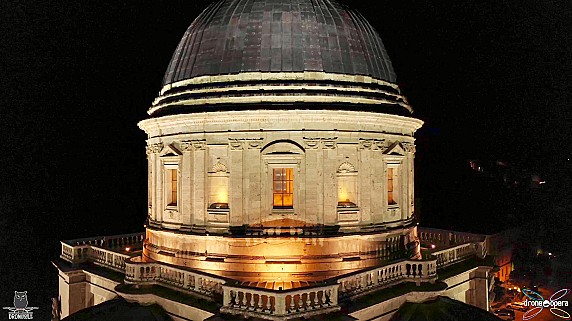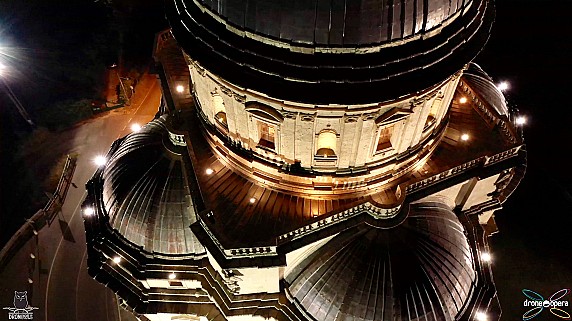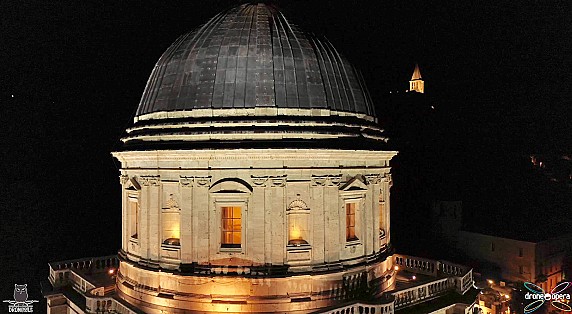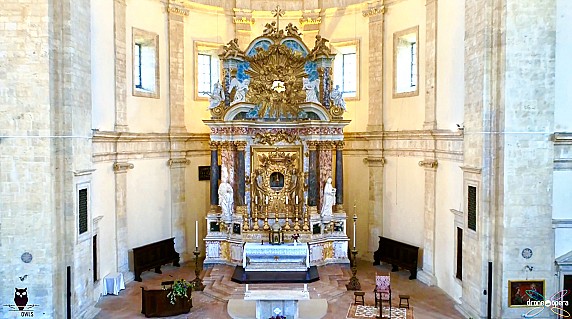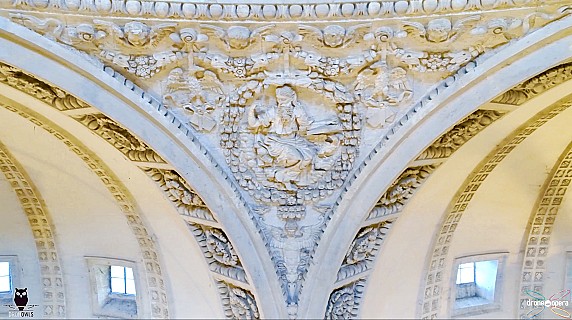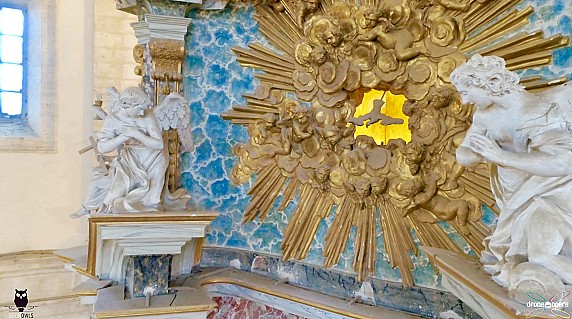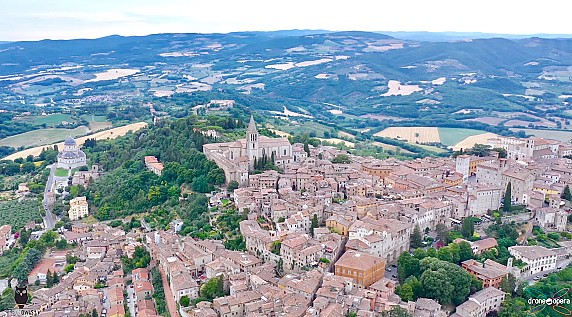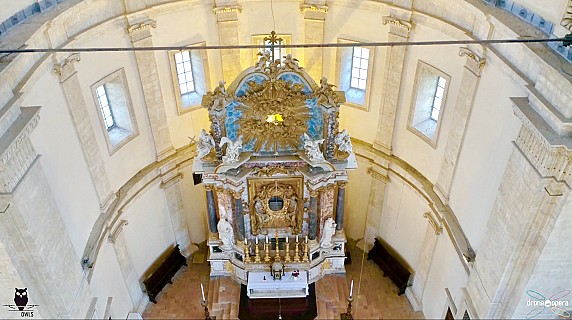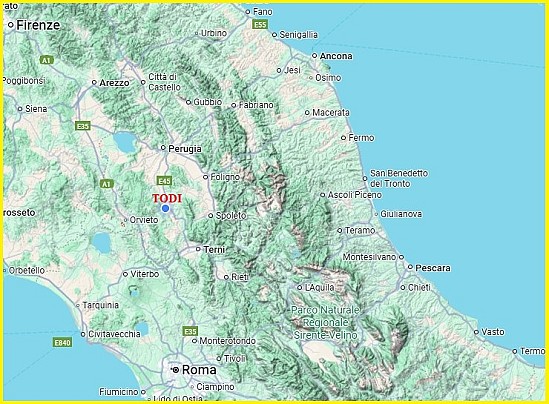Todi: The Ideal City
Visit Churh of Santa Maria della Consolazione and how to get to Todi
04 Settembre 2025
Todi: The Ideal City and a Renaissance Masterpiece
Todi is a place where time seems to stand still, a gem nestled in the heart of Umbria. Defined as "the ideal city," Todi offers a magical atmosphere and a historical heritage that makes it an unmissable destination. Its beauty isn't just in its history, but in its soul, made of cobblestone alleys, breathtaking views, and a tranquility that rejuvenates the spirit. Visiting Todi means immersing yourself in a complete sensory experience: from the flavors of local cuisine to the art that can be felt in every corner, to the stunning panoramic views of the Tiber Valley.
The beating heart of this beauty is undoubtedly the Church "Santa Maria della Consolazione". This masterpiece of Renaissance architecture is one of the most significant monuments in Italy. Built between 1508 and 1607, it represents the perfect synthesis of Renaissance ideals of harmony, symmetry, and proportion. Its central Greek-cross plan and majestic dome rise with an elegance that inspires both devotion and admiration. Inside, light filters through the windows, creating an ethereal atmosphere that invites contemplation. The design is said to have been influenced by artists like Donato Bramante or Leonardo Da Vinci, although no documents prove it. Its geometric perfection makes it a true icon of the Renaissance, a place where art and spirituality merge into an unforgettable experience.
Getting to Todi
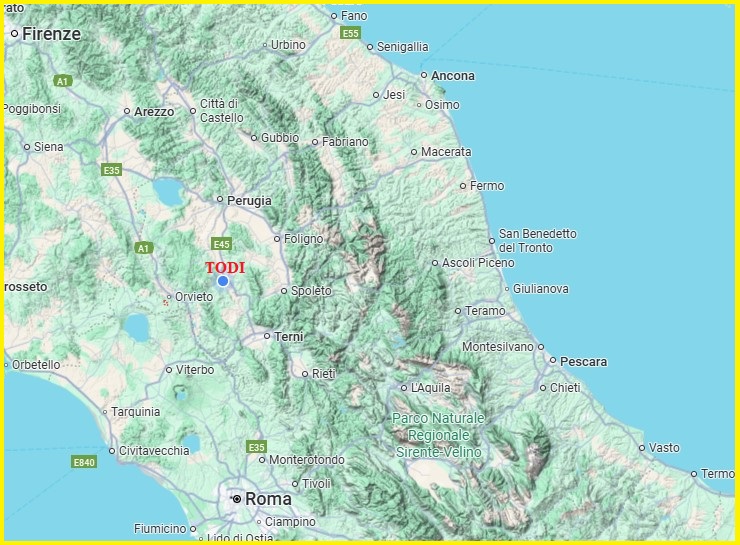
By plane:
From Perugia Airport (San Francesco d'Assisi, PEG): The airport is located approximately 45 km north of Todi. You can rent a car or take a taxi. Alternatively, you can reach Perugia's train station by shuttle bus and then take a train to Todi-Ponte Rio (with a change in Todi).
From Rome Airports (Fiumicino FCO or Ciampino CIA): Both airports are about 150 km south of Todi.
By car:
Todi is strategically located in Umbria.
From the north: Take the A1 (Milan-Naples) motorway southbound, exit at Valdichiana. Continue towards Perugia and then follow signs for Todi.
From the south: Take the A1 (Milan-Naples) motorway northbound, exit at Orte. Continue on the E45 towards Perugia, then take the Todi exit.
By train:
The Todi-Ponte Rio train station is about 4 km from the historic center. From there, you can take a shuttle bus that goes directly into the city.
International promotion project for Todi and the Churc "Santa Maria della Consolazione" with the Patrocinio and funding of the "Camera di Commercio dell'Umbria"

---
THE TEMPLE OF SANTA MARIA DELLA CONSOLAZIONE FROM FAITH PROJECT TO RENAISSANCE BUILDING SITE
“In the year of our health 1508 it pleased the Most High to make with marked Miracles the object of singular Devotion an effigy of the Blessed Virgin painted on a wall near the city of Todi.” These are the words scholars used in the 18th century to explain what led to the construction of the Temple of Santa Maria della Consolazione. Originally there was a small shrine housing a depiction of the mystical wedding of Santa Caterina di Alessandria, placed just outside the city walls and totally overgrown with brambles; since May 1508, it began to dispense numerous graces, so that the image was given, by popular rumour, the title of Our Lady of Consolazione. All these extraordinary events so heightened the devotion of the inhabitants that, at first, it was placed in a small chapel in order to protect the miraculous effigy from the weather and give the faithful the opportunity to venerate it. Subsequently, the idea began to mature of accommodating the small chapel which sheltered the venerated image within a larger church that would suitably welcome the devotees on pilgrimage. It is these early construction choices that lead to the building’s qualification as a true Marian shrine, comparing its construction philosophy to other coeval buildings such as the Holy House at Loreto or the Portiuncula at Santa Maria degli Angeli.
A Congregation of Tuderti nobles was immediately established to oversee and finance the construction of the church, which served the dual function of a building of worship and at the same time the seat of the Congregation. From 1508 the noble congregation began to produce documentation pertaining to both its charitable and assistance activities and its management for the construction of the Temple; today this documentation constitutes the archives of the Fabbrica della Consolazione. Parallel to the construction of the church, the Hospitals were being set up to provide shelter for pilgrims coming from all over Europe to venerate the Holy Image.
Thus, from an act of devotion and the desire of a group of Todi aristocrats to eternalise the greatness of the city of Todi in architecture, the adventure of building one of the most important religious buildings of 16th-century Italy began. The most excellent architects and master builders of the time participated in the design of the building. The entire chronological reconstruction of the interventions was made possible thanks to extensive research by distinguished Italian and European historians precisely on the papers that make up the archives of the Fabbrica della Consolazione.
On May 20, 1509, Cola da Caprarola was called by the Rectors of the Fabbrica, as those who attended to the work of the Temple were called. Donations that many of the faithful of Todi made to contribute to the expenses of the Sacred Building increased alongside the work. In 1531 Antonio da Sangallo il Vecchio was involved in the construction.
In 1518, before Sangallo’s arrival, payments made to Baldassarre Peruzzi then, in 1532, to Antonio da Sangallo il Giovane are recorded. On June 18, 1565, Jacopo Barozzi known as the Vignola was paid 18 florins for his “fatighe”, his labour, on the Temple of Consolazione. Two years later, in 1567, it was the turn of Perugian architect Galeazzo Alessi until 1597 with the intervention of Orvieto’s Ippolito Scalza. The architects were joined by master stone masons from northern Italy, including famous Italian stone masters such as Rocco da Vicenza or the Casella brothers from Carona. The work was finally brought to completion on April 16, 1607, after over 100 years, with the placement on the lantern of an iron cross carried in solemn procession by the bishop of Todi Marcello Lante.
On November 5, 1574 on the occasion of Pietro Camaiani’s apostolic visit, the great architect Donato Bramante was mentioned for the first time in these words:”...the great temple we have mentioned will be truly praiseworthy if they complete it following the model that we have personally seen designed by the famous architect Donato Bramante.” The history of the distinguished city monument continued even after its completion given the constant need for restoration and maintenance work. Illustrious names in Italian art continued to be linked to the Todi monument: on January 1, 1620, the Rectors took themselves to Rome, with the wooden model in tow, to ask Carlo Maderno, Architect of the Fabbrica di San Pietro, for advice on some works to be completed. Another major architectural consultation is noted in the archival records of 1660 when again the Rectors with the wooden model came to Rome to get advice from Francesco Borromini on how to protect the Temple from moisture.
The Consolazione was the privileged locus celeber for all forms of ritual and religious and civil representation between the 17th and 19th centuries with solemn processions, sacred services, visitations and religious festivals always accompanied by what were anciently called “arquebus shots.”
However, it is not only an artistic symbol but much more; it is a place of faith, a Marian shrine, in which the entire community of the city identifies. This is the most important value of our Consolazione, which has accompanied and accompanies generations and generations of Tuderti in many moments of their lives.
Filippo Orsini
***
Photo Credit: Cantabris (Carlo Pirovano)
***
Todi: La Città Ideale e la Perfezione del Rinascimento
Todi è un luogo dove il tempo sembra essersi fermato, una gemma incastonata nel cuore dell'Umbria. Definita "la città ideale", Todi offre un'atmosfera magica e un patrimonio storico che la rende una destinazione imperdibile. La sua bellezza non è solo nella sua storia, ma nella sua anima, fatta di vicoli in pietra, panorami mozzafiato e una tranquillità che rigenera lo spirito. Visitare Todi significa immergersi in un'esperienza sensoriale completa: dai sapori della cucina locale all'arte che si respira in ogni angolo, fino alle vedute panoramiche sulla valle del Tevere che tolgono il fiato.
Il cuore pulsante di questa bellezza è senza dubbio il Tempio di Santa Maria della Consolazione. Questo capolavoro dell'architettura rinascimentale è uno dei monumenti più significativi d'Italia. Costruito tra il 1508 e il 1607, rappresenta la perfetta sintesi degli ideali rinascimentali di armonia, simmetria e proporzione. La sua pianta centrale a croce greca e la maestosa cupola si ergono in un'eleganza che ispira devozione e ammirazione. Al suo interno, la luce filtra dalle finestre creando un'atmosfera eterea che invita alla contemplazione. Si dice che il progetto sia stato influenzato da artisti come Donato Bramante, sebbene non vi siano documenti che lo provino. La sua perfezione geometrica lo rende un'icona del Rinascimento, un luogo dove arte e spiritualità si fondono in un'esperienza indimenticabile.
Come Arrivare a Todi
In aereo:
Dall'Aeroporto di Perugia (San Francesco d'Assisi, PEG): L'aeroporto si trova a circa 45 km a nord di Todi. È possibile noleggiare un'auto o prendere un taxi. In alternativa, si può raggiungere la stazione ferroviaria di Perugia con un bus navetta e da lì prendere un treno per Todi-Ponte Rio (con cambio a Todi).
Dagli Aeroporti di Roma (Fiumicino FCO o Ciampino CIA): Entrambi gli aeroporti si trovano a circa 150 km a sud di Todi.
In auto:
Todi si trova in posizione strategica in Umbria.
Da nord: A1 (Milano-Napoli) direzione sud, uscita Valdichiana. Proseguire per Perugia e poi seguire le indicazioni per Todi.
Da sud: A1 (Milano-Napoli) direzione nord, uscita Orte. Proseguire sulla E45 in direzione Perugia, uscita Todi.
In treno:
La stazione ferroviaria di Todi-Ponte Rio si trova a circa 4 km dal centro storico. Da qui, è possibile prendere un bus navetta che porta direttamente in città.
Progetto di promozione internazionale di Todi e del Tempio della Consolazione con il patrocinio e il finanziamento della Camera di Commercio dell'Umbria.

---
Ultimo aggiornamento
Mercoledi 15 Ottobre 2025
